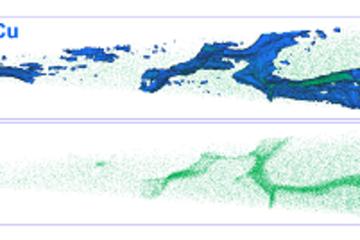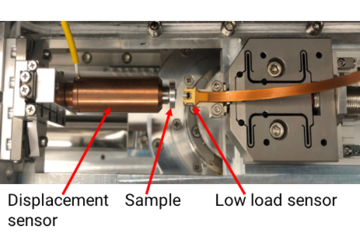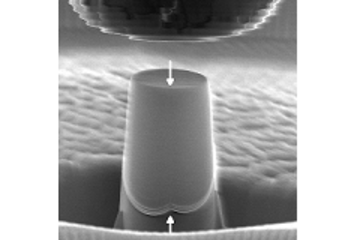All genres
441.
Talk
Quantitative three-dimensional imaging of chemical short-range order via machine learning enhanced atom probe tomography. BiGmax Spring Meeting 2022, Bochum, Germany (2022)
442.
Talk
Quantitative three-dimensional imaging of chemical short-range order in Fe–18Al. TMS 2022, Online (2022)
443.
Talk
Atomic‐scale insights to design of high‐performing SmCo based sintered permanent magnets gained by atom probe tomography. 12th International Conference on Magnetic and Superconducting Materials (MSM22), Duisburg, Germany (2022)
444.
Talk
Hydrogen/ Deuterium Detection in Ferrite-Austenite Dual Phase Steels. Microscopy and Microanalysis 2022, online, Portland, OR, USA (2022)
445.
Talk
An overview of the state-of-the-art of hydrogen analysis by APT. APT school 2021, online, Rouen, France (2021)
446.
Talk
Convolutional neural network-assisted recognition of nanoscale L12 ordered structures in face-centred cubic alloys. Materials Oceania 2021, Online (2021)
447.
Talk
Developing correlative and in situ microscopy to study structure-property relationships in thermoelectric materials. Modern electron microscopy and correlative techniques, online (2021)
448.
Talk
Revealing in-plane grain boundary composition features through machine learning from atom probe tomography. DPG Conference 2021, Online, Germany (2021)
449.
Talk
Ultrastrong and ductile complex concentrated alloy via interstitial solid solutioning. Euromat 2021, Virtual Conference, Graz, Austria (2021)
450.
Talk
Atomic‐scale Insights to Design of High‐Performing Hard Magnets Gained by Atom Probe Tomography. Atom Probe Tomography & Microscopy 2021 (Virtual Conference), Online (2021)
451.
Talk
Pushing the analytical limits of atom probe tomography via cryo-enabled workflows. Microscience Microscopy Congress 2021, online, Oxford, UK (2021)
452.
Talk
Investigation of hydrogen embrittlement in high Mn TWIP steel via correlative microscopy (ECCI, APT). Cameca Online Webinar series for Atom Probe Tomography (2021)
453.
Talk
Du térawatt au picomètre: Voyage au cœur des technologies de l’hydrogène. Café des Sciences de l’Ambassade de France en Allemagne, online, Berlin, Germany (2021)
454.
Talk
Advancing corrosion understanding with (cryo-) Atom Probe Tomography. Imperial College London - Rolls Royce corrosion seminar, online, London, UK (2021)
455.
Talk
Machine-Learning for Atom Probe Tomography. Workshop 'Research-data management, machine learning and material informatics for Superalloys', online, Bochum, Germany (2021)
456.
Talk
Theory and Advances in Atom Probe Tomography. Canadian Centre for Electron Microscopy Summer School, online, Hamilton, ON, Canada (2021)
457.
Talk
Introduction to atom probe tomography: performance and opportunities in characterizing microstructures. Metallic Microstructures: European Lectures Online (2021)
458.
Talk
Sustainable Metals. Virtual Keynote Perspective Lecture, Materials Chain and Materials Science Department, RUB
, Bochum, Germany (accepted)
459.
Talk
Structure, chemistry and thermodynamics of Lattice Defects. Colloquium of the Department of Materials Science and Engineering, Ohio State Universitry, online, Columbus, OH, USA (2021)
460.
Talk
Convolutional neural network-assisted recognition of nanoscale L12 ordered structures in face-centred cubic alloys. TMS 2021, Online (2021)











